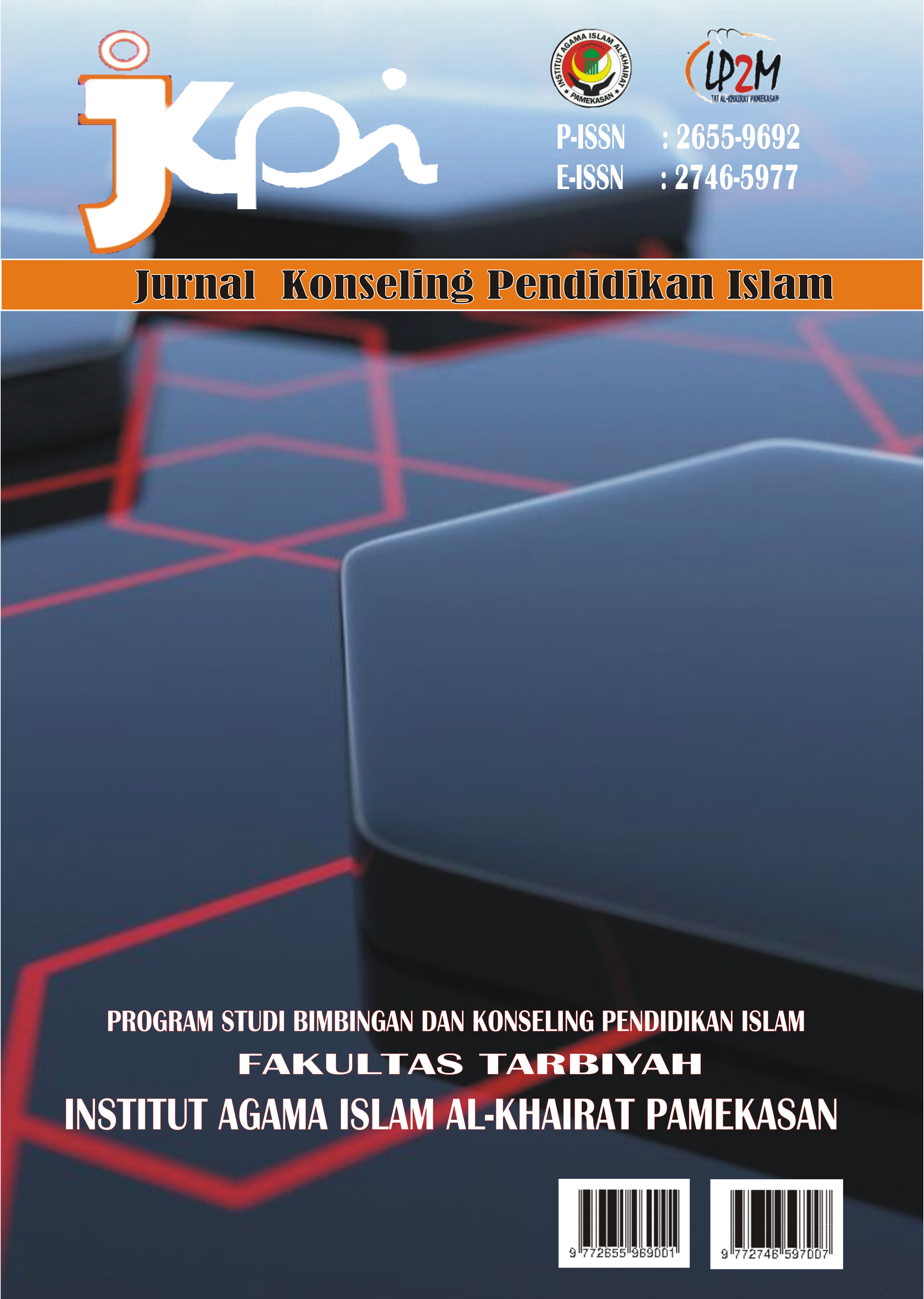THE EFFECTIVENESS OF MOBILE APPLICATION LEARNING MEDIA IN SUPPORTING BLENDED LEARNING AT STATE ELEMENTARY SCHOOL 1 BANYUATES
##plugins.themes.academic_pro.article.main##
Abstract
This study aims to analyze the effectiveness of mobile app-based learning media in supporting blended learning implementation at SMPN 1 Banyuates. The research employed a quasi-experimental design with a pretest-posttest model and control group. The research subjects were 62 eighth-grade students divided into an experimental group (n=32) and a control group (n=30). The experimental group used interactive mobile apps integrated with face-to-face learning, while the control group followed conventional learning. Data were collected through learning achievement tests, student engagement observation sheets, and perception questionnaires. Results showed that the experimental group experienced an average score improvement of 11.63 points compared to 5.47 points in the control group. Independent t-test yielded p-value = 0.008 (p < 0.05) with Cohen’s d = 0.52, indicating a statistically significant moderate effect. These findings suggest that mobile app usage in blended learning effectively improves student learning outcomes, although there remains room for further optimization.
##plugins.themes.academic_pro.article.details##

This work is licensed under a Creative Commons Attribution 4.0 International License.
References
- Al-Emran, M., Elsherif, H. M., & Shaalan, K. (2016). Investigating attitudes towards the use of mobile learning in higher education. Computers in Human Behavior, 56. https://doi.org/10.1016/j.chb.2015.11.033
- Anayochukwu, V., & Chinelo, E. (2021). Effects of Blended Learning Instructional Approach on Secondary School Students ‘ Academic Achievement in Computer Studies. International Journal of Education and Evaluation, 7(2).
- Annur, C. M. (2023). Pengguna Internet di Indonesia Tembus 213 Juta Orang hingga Awal 2023. Databooks. https://databoks.katadata.co.id/teknologi-telekomunikasi/statistik/d109a45f4409c34/pengguna-internet-di-indonesia-tembus-213-juta-orang-hingga-awal-2023
- Boelens, R., De Wever, B., & Voet, M. (2017a). Four key challenges to the design of blended learning: A systematic literature review. In Educational Research Review (Vol. 22). https://doi.org/10.1016/j.edurev.2017.06.001
- Boelens, R., De Wever, B., & Voet, M. (2017b). Four key challenges to the design of blended learning: A systematic literature review. Educational Research Review, 22, 1–18. https://doi.org/10.1016/j.edurev.2017.06.001
- Creswell, J. W. (2012). Educational research: Planning, conducting, and evaluating quantitative and qualitative research. In Educational Research (Vol. 4).
- Damaševičius, R., & Sidekersniene, T. (2023). Designing Immersive Gamified Experiences in the Metaverse for Enhanced Student Learning. 2023 International Conference on Intelligent Metaverse Technologies and Applications, IMETA 2023. https://doi.org/10.1109/iMETA59369.2023.10294971
- Fabian, K., Topping, K. J., & Barron, I. G. (2016). Mobile technology and mathematics: effects on students’ attitudes, engagement, and achievement. Journal of Computers in Education, 3(1). https://doi.org/10.1007/s40692-015-0048-8
- Ghani Fauzan Fasna, Dzikri Rahmat Romadhon, & Ai Nurlaela. (2024). Peran Penting Teknologi dalam Pendidikan Sains: Pengembangan dan Validasi Media Pembelajaran Berbasis Android dengan App Inventor untuk Pemahaman Materi Gelombang Cahaya. JURNAL PENDIDIKAN MIPA, 14(1). https://doi.org/10.37630/jpm.v14i1.1485
- Güler, M., Bütüner, S. Ö., Danişman, Ş., & Gürsoy, K. (2022). A meta-analysis of the impact of mobile learning on mathematics achievement. Education and Information Technologies, 27(2). https://doi.org/10.1007/s10639-021-10640-x
- Hwang, G., Chien, S., & Li, W. (2021). A multidimensional repertory grid as a graphic organizer for implementing digital games to promote students’ learning performances and behaviors. British Journal of Educational Technology, 52(2), 915–933. https://doi.org/10.1111/bjet.13062
- Hwang, G. J., & Chang, S. C. (2021). Facilitating knowledge construction in mobile learning contexts: A bi-directional peer-assessment approach. British Journal of Educational Technology, 52(1), 337–357. https://doi.org/10.1111/bjet.13001
- Hyman, R. (1982). Quasi-Experimentation: Design and Analysis Issues for Field Settings (Book). Journal of Personality Assessment, 46(1). https://doi.org/10.1207/s15327752jpa4601_16
- Imamyartha, D., Wahjuningsih, E., Puspa, A., Bilqis, M., & Hudori, R. F. A. (2021). An Experiment on Mobile Learning to Leverage EFL Learners’ Engagement, Emotional Intelligence, and Learning Motivation. Journal of Asia TEFL, 18(4). https://doi.org/10.18823/asiatefl.2021.18.4.13.1285
- Kim, D., Ruecker, D., & Kim, D. J. (2017). Mobile assisted language learning experiences. International Journal of Mobile and Blended Learning, 9(1). https://doi.org/10.4018/IJMBL.2017010104
- Koohang, A. (2009). A learner-centred model for blended learning design. International Journal of Innovation and Learning, 6(1). https://doi.org/10.1504/IJIL.2009.021685
- Lämsä, J., Hämäläinen, R., Koskinen, P., Viiri, J., & Mannonen, J. (2020). The potential of temporal analysis: Combining log data and lag sequential analysis to investigate temporal differences between scaffolded and non-scaffolded group inquiry-based learning processes. Computers & Education, 143, 103674. https://doi.org/10.1016/j.compedu.2019.103674
- Liaw, S.-S. (2015). Investigating learner attitudes toward mobile learning environments: Based on gender perspectives. International Dialogues on Education Journal, 2(2). https://doi.org/10.53308/ide.v2i2.202
- Maughan, R. (2017). Research methods in physical activity. Journal of Sports Sciences, 35(5). https://doi.org/10.1080/02640414.2016.1169035
- Muhammad Yusuf, Dwi Julianingsih, & Tarisya Ramadhani. (2023). Transformasi Pendidikan Digital 5.0 melalui Integrasi Inovasi Ilmu Pengetahuan dan Teknologi. Jurnal MENTARI: Manajemen, Pendidikan Dan Teknologi Informasi, 2(1). https://doi.org/10.33050/mentari.v2i1.328
- Sung, Y. T., Chang, K. E., & Liu, T. C. (2016). The effects of integrating mobile devices with teaching and learning on students’ learning performance: A meta-analysis and research synthesis. Computers and Education, 94. https://doi.org/10.1016/j.compedu.2015.11.008
- Tong, D. H., Uyen, B. P., & Ngan, L. K. (2022). The effectiveness of blended learning on students’ academic achievement, self-study skills and learning attitudes: A quasi-experiment study in teaching the conventions for coordinates in the plane. Heliyon, 8(12). https://doi.org/10.1016/j.heliyon.2022.e12657
- Wahyuni, S., Wulandari, E. U. P., Rusdianto, Fadilah, R. E., & Yusmar, F. (2022). PENGEMBANGAN MOBILE LEARNING MODULE BERBASIS ANDROID UNTUK MENINGKATKAN LITERASI DIGITAL SISWA SMP. LENSA (Lentera Sains): Jurnal Pendidikan IPA, 12(2). https://doi.org/10.24929/lensa.v12i2.266
- Wang, F., & Hannafin, M. J. (2005). Design-based research and technology-enhanced learning environments. In Educational Technology Research and Development (Vol. 53, Issue 4). https://doi.org/10.1007/BF02504682
- White, H., & Sabarwal, S. (2014). Quasi-Experimental Design and Methods, Methodological Briefs: Impact Evaluation No.8: In UNICEF Office of Research (Issue 8).
- Wong, L. H., & Looi, C. K. (2011). What seams do we remove in mobile-assisted seamless learning? A critical review of the literature. Computers and Education, 57(4). https://doi.org/10.1016/j.compedu.2011.06.007
- Yeh, Y.-F., Chan, K. K. H., & Hsu, Y.-S. (2021). Toward a framework that connects individual TPACK and collective TPACK: A systematic review of TPACK studies investigating teacher collaborative discourse in the learning by design process. Computers & Education, 171, 104238. https://doi.org/10.1016/j.compedu.2021.104238

